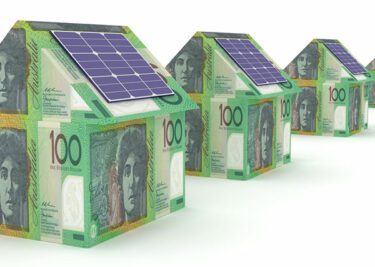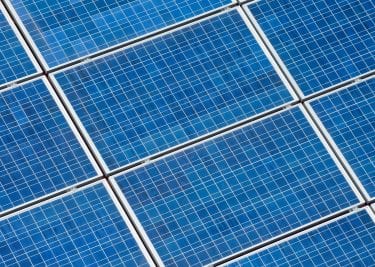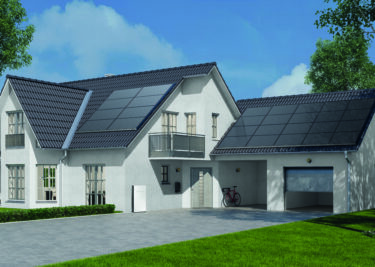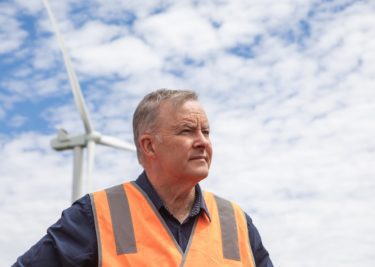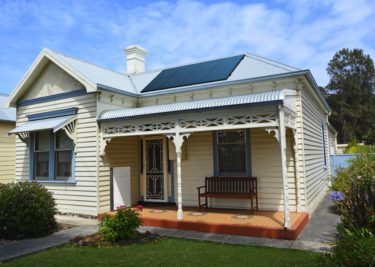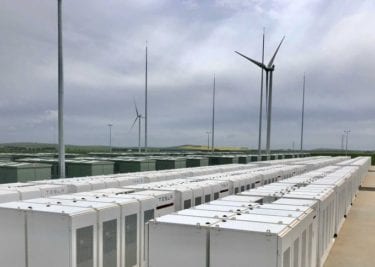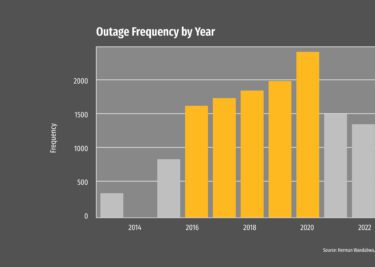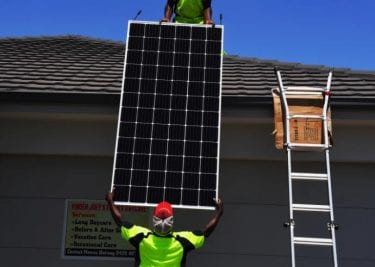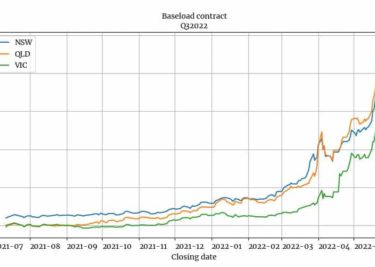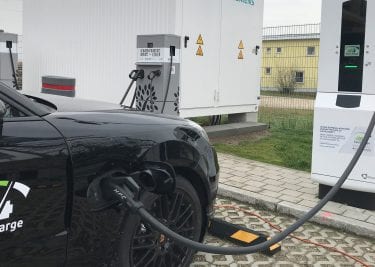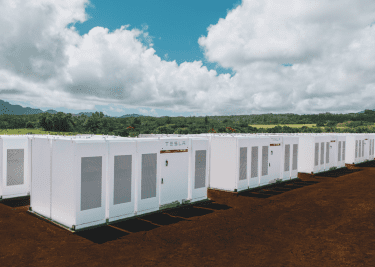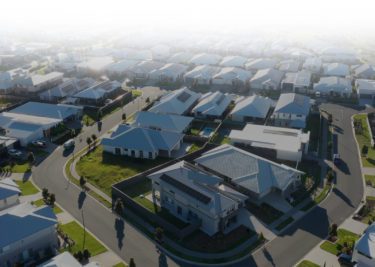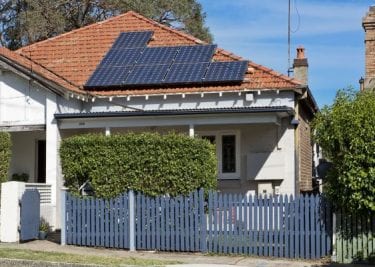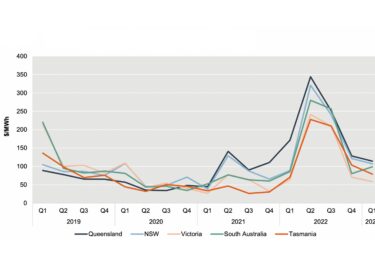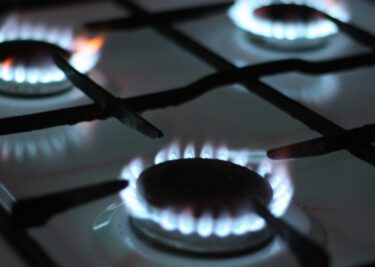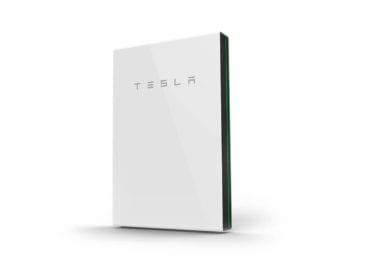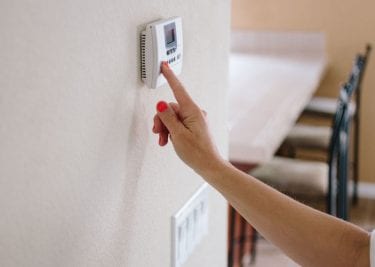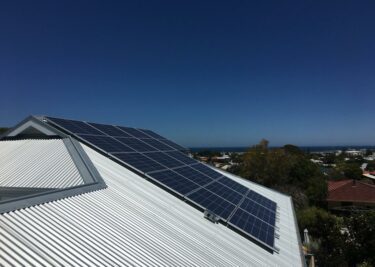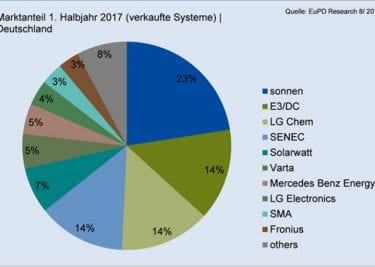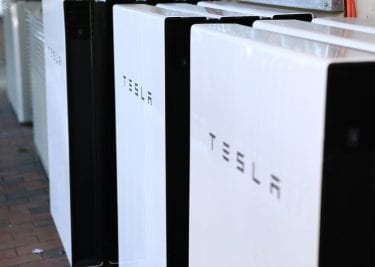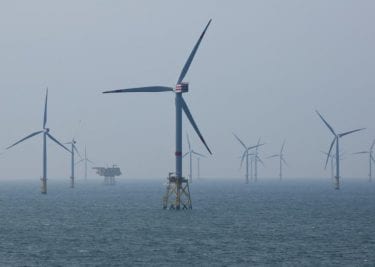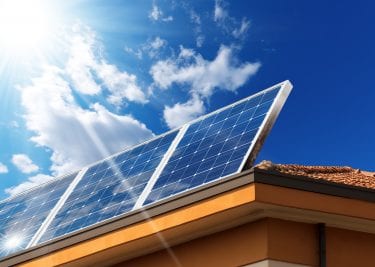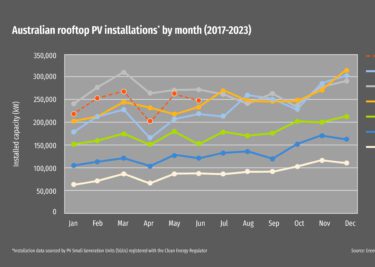With a massive increase in power bills expected from July 1, solar and batteries are the only protection from massive electricity price hikes for Aussie homeowners and businesses.
The Australian Energy Regulator (AER), which sets a “safety net” price guidance to utilities known as the Default Market Offer (DMO), has recommended price increases of up to 31%. In 2022, the AER had hinted that electricity prices could go up by 50%. Thankfully, the increase has been kept to more like one quarter or two thirds, but it’s still an unprecedented leap.
The increase comes as a result of surging coal and gas prices, along with a more volatile wholesale electricity market in general. Efforts by the Albanese government to moderate electricity price increases, by putting a cap on coal and gas prices, might have avoided an ever more dramatic hike – but the AER indicated that it was bound to happen.
“Energy prices are not immune from the significant challenges in the global economy right now” says AER Chair Claire Savage, “that’s why it’s more important than ever that we strike a balance in setting the DMO to protect consumers as well as allowing retailers to continue to recover their costs and innovate.”
The reason for the high coal and gas prices is distant from Australia, but it’s no secret. Russia’s invasion of Ukraine combined with a global energy system in transition has resulted in an unprecedented energy crisis – and Aussie householders will be left picking up part of the tab.
The AER’s determination could lead to price hikes of 23.7% in NSW, 21.8% in South Australia and 19.8% in southeast Queensland. In Victoria, the state’s regulator has indicated that electricity prices will rise by a staggering 30% for residential customers and 31% for small businesses.
To be clear – the DMO doesn’t set the price, it provides a guidance to electricity retailers, but generally flows to electricity bills. The recommendation from the AER is now out for review, with price hikes expected to follow regardless from July 1.
“It’s important to understand that the DMO is not the best offer, it is a safety-net,” reiterated Savage. And it is always good advice for homeowners to shop around for the best electricity tariff they can get.
However, the “big picture” economic dynamics – a war disrupting gas supply and causing increased demand for coal right around the world – just can’t be avoided, and electricity prices are going up, and in a very big way.
Thankfully, there is light at the end of the tunnel in the form of solar and battery energy storage systems – the single most effective tool for homeowners to protect themselves from skyrocketing power bills. In a world in which so many factors are out of the average householder’s hands, the opportunity to take control of the situation by installing rooftop PV, and ideally a solar battery alongside it, is a golden one.
Solar and battery price trends
Sticking to the good news, a closer look at the price dynamics within the solar and battery energy storage industries suggests there is no better time than today to take your energy independence in your own hands.
Let’s dig into the nuts and bolts of the thing; it may get a little geeky, but stick with me.
Firstly, while the price of coal and gas might be going up, solar prices are heading the other way. Here’s why:
- Solar supply chains have stabilized: While Covid-19 threw much of the world’s economy out of alignment, things have largely returned to normal in the solar supply chain. Many of the materials backlogs have cleared – from the chips used in solar inverters to materials like EVA (which keeps water out of a solar module), driving down solar system prices for installers and homeowners.
- Raw materials are getting cheaper: The solar industry has been facing high raw materials over the last 12 to 18 months, particularly key ingredient polysilicon. Polysilicon prices were up around $40/kg in mid 2022, but have since halved to around $20/kg in January 2023. Analysts BloombergNEF expect prices to keep falling toward the 15/kg mark. The polysilicon price is generally the key driver in solar panel prices, so things are looking good for cheaper rooftop solar systems.
- Battery makers are bulking up: With demand rising fast, the manufacturers of solar batteries are building new factories like never before. At its Investor Day event in early March, EV and Powerwall battery maker Tesla demonstrated how quickly it can bring new factories online – its new factory in Shanghai took a little over 9 months to construct and ramp up. Tesla also reported a four-fifths reduction in the amount of factory space needed to build batteries. And the company is even going to start producing its own lithium at a new facility in Texas. Expected to be operational within 12 months, the new Tesla lithium refinery won’t be alone for long. Tesla announced plans for a cathode manufacturing facility next door. With this kind of speed, efficiency, and now vertical integration, the result is lower Tesla battery costs.
- Less battery competition from EVs: While the number of EVs being sold increased from 300,000 in February 2021 to 600,000 in February 2022, there has been steep short-term decline in sales. Analysts Rystad Energy report that around 670,000 EVs were sold in January 2023, almost half the month previous. This means that in the short term more lithium-ion batteries will be available for solar batteries – further driving down residential battery prices.
The result is a rather compelling picture. While electricity prices for homeowners are hitting new highs, the costs for solar and batteries are heading in exactly the opposite direction.
There truly has never been a better time to install a solar system on your home, and now the economics of adding a battery to your system is on your side. And when the big bills come to those who didn’t take this golden opportunity, you’ll be laughing through the night under solar-powered lights.
In 2023 the world is an uncertain place, but you can take control of your power supply and protect yourself from the major electricity price hikes that are just around the corner.

